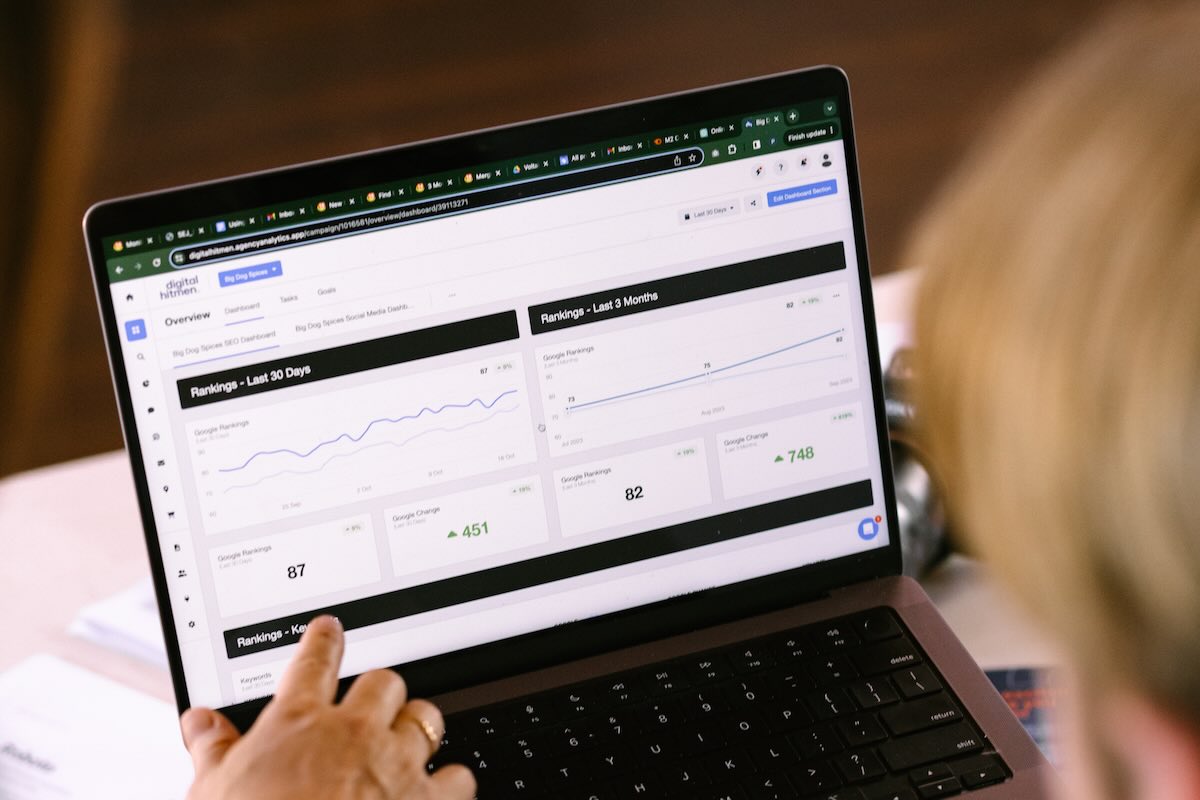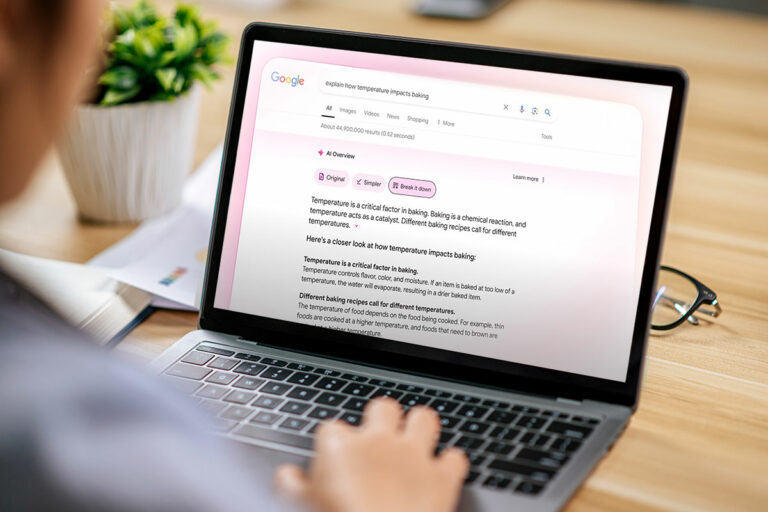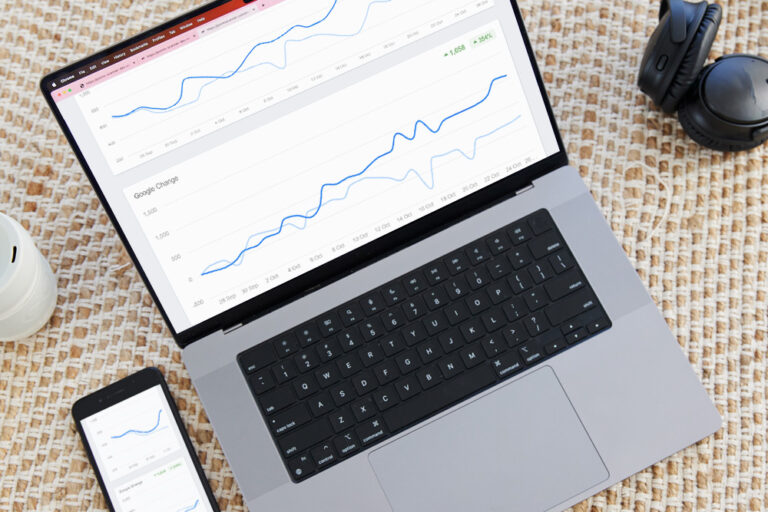You can use the $10k Small Business Growth Grant for digital marketing by investing in any activity that strengthens your online presence and supports business growth. This can include SEO and Google Ads campaigns, as well as social media management, influencer partnerships, video production, email marketing, website improvements, digital PR, and conversion optimisation.
The most effective approach is to select channels based on your industry, audience behaviour, and budget, ensuring each dollar supports measurable outcomes like increased visibility, qualified leads, and higher sales.
Quick summary
- The Small Business Growth Grant offers up to $10,000 in matched funding for growth-focused services, including digital marketing.
- Eligible Perth metro businesses must have an ABN, GST registration from before 1 January 2024, turnover above $200,000, and 1-20 full-time equivalent staff.
- Apply via SmartyGrants by 3 October 2025, providing financial docs, a service quote, and project summary.
- Prioritise high-ROI services like SEO, PPC campaigns, content marketing, and web design to boost traffic, leads, and conversions.
- Avoid pitfalls by aligning projects with grant guidelines and choosing reputable providers.
1. Check the Small Business Growth Grant eligibility criteria
Eligibility is strict; missing one criterion voids your application:
- Hold an ABN and be GST-registered without interruption before 1 January 2024.
- Operate a for-profit business in Western Australia, trading continuously before 1 January 2024.
- Annual turnover over $200,000; Australia-wide payroll under $4 million.
- Employ 1-20 full-time equivalent staff, including owners.
- Principal place in Perth metro; provide a 2025 bank statement showing transactions.
Non-profits, charities, and businesses outside Perth metro are ineligible. Use the SBDC postcode checker to confirm your location. Review the full SBDC guidelines for clarity.
2. Check which digital marketing mediums work for your industry
No single digital marketing channel works equally well for every business. The most effective mix depends on your audience, sales cycle, and where potential customers spend their time. Your industry determines which channels should lead and which should support.
| Industry | Recommended digital marketing channels |
|---|---|
|
Healthcare |
Organic search is critical, as patients often research symptoms or treatments before contacting a provider. Content marketing and SEO for condition-specific terms can drive steady enquiries, while Google Ads capture urgent searches like “emergency dentist Perth.” Social media plays a smaller role but can support patient education. |
|
Automotive |
For dealerships, Google Ads and Facebook Marketplace can generate fast leads, while Instagram, TikTok, and YouTube showcase vehicles visually. Workshops and niche providers often benefit from SEO for specialist service terms and video content demonstrating expertise. |
|
Legal services |
Clients often search with urgent intent, making PPC a strong lead driver. SEO and content marketing help build long-term visibility and trust. Webinars, podcasts, and LinkedIn can be valuable for niche or B2B legal services. |
|
E-commerce & retail |
Google Shopping and retargeting ads convert bottom-funnel customers, while SEO on product and category pages builds sustainable traffic. TikTok and Instagram can create demand through product discovery, and email marketing drives repeat sales. |
|
Events & hospitality |
Social media advertising (Facebook, Instagram, TikTok) generates awareness and ticket sales quickly. Local SEO helps capture intent-based searches like “wedding venues Perth.” Influencer partnerships and event listing sites can expand reach. |
|
B2B services |
LinkedIn Ads, account-based marketing, and industry-specific webinars are strong lead sources. SEO for industry-relevant queries builds authority over time, while email nurture sequences maintain engagement through longer sales cycles. |
|
Trades & home services |
Local SEO, Google Business Profile optimisation, and Google Ads dominate, as customers typically search when they have an immediate need. Facebook and Instagram can be effective for showcasing recent projects or customer reviews. |
|
Finance & professional services |
Trust is key. SEO, thought leadership content, and webinars establish authority, while PPC targets high-value service keywords. LinkedIn is useful for professional networking and lead generation. |
|
Logistics & industrial |
SEO for B2B and technical terms can secure long-term contracts. LinkedIn Ads and targeted display advertising in industry publications help reach procurement teams. Video case studies demonstrate capability at scale. |
|
Education & training |
SEO for course-specific searches and PPC campaigns during enrolment periods drive leads. YouTube and social media can showcase student stories, while email automation nurtures prospects over multiple touchpoints. |
|
Hospitality & tourism |
Social media platforms like Instagram and TikTok drive inspiration-based bookings. Local SEO captures searches like “Perth boutique hotel,” and partnerships with online travel agents or review platforms expand reach. |
|
Not-for-profits |
A balanced approach often works best: organic search for awareness, social media for community building, and PPC for campaign-specific fundraising. Google Ad Grants can provide additional budget for search visibility. |
The goal is to focus grant-funded investment on channels that match your audience’s behaviour and decision-making process, rather than diluting results across platforms that don’t align with how your customers buy.
3. Pick a digital marketing mix that aligns with your needs
The Small Business Growth Grant funds a range of digital marketing services under its marketing and communication planning category. Below, we’ve outlined the four strategies that typically deliver the highest ROI across most industries, along with other viable options worth considering to maximise your grant investment.
Search engine optimisation (SEO)
SEO is the foundation for long-term online growth and brand authority. You can use the grant to fund:
- Comprehensive SEO audits to uncover keyword gaps, technical issues, and opportunities your competitors are missing
- On-page optimisation, including meta titles, descriptions, internal linking, and structured content for better click-through rates and user engagement
- Local SEO to improve Google Business Profile visibility and capture high-intent local searches
- Technical SEO enhancements for site speed (targeting PageSpeed scores above 90), schema markup, and mobile-first responsiveness
- Strategic content development using hub-and-spoke models to build topical authority and funnel traffic from informational to conversion pages
Why prioritise SEO? It compounds over time, delivering visibility, leads, and brand trust without the ongoing ad spend required by paid channels.
Question: Are you leaving valuable organic traffic on the table by ignoring search intent?
Pay-per-click (PPC) campaigns
PPC delivers rapid visibility and can generate leads almost immediately. You can use the grant to:
- Build targeted campaigns for high-intent keywords (e.g., “family lawyer Perth”) that convert quickly
- Refine ad copy, landing pages, and bidding strategies to maximise ROI
- Leverage visual ad platforms like Facebook, Instagram, and YouTube to connect with specific audiences at scale
- Explore LinkedIn Ads for B2B or display ads for brand awareness where relevant
The right PPC mix depends on your industry and audience. For example, local service providers may see faster ROI from Google Ads, while lifestyle brands often benefit from highly visual social media ads.
Content marketing
High-quality, EEAT (expertise, experience, authority, trustworthiness) aligned content not only drives traffic but also nurtures trust and conversions. The grant can fund:
- Hub-and-spoke content models that attract top-of-funnel visitors and lead them toward service or product pages
- Authoritative blog posts, FAQs, and guides designed to answer real customer questions and reduce bounce rates
- Industry-specific content such as condition-focused landing pages in healthcare or product comparison guides in e-commerce
- Evergreen resources and thought leadership articles to build long-term authority
While email marketing, newsletters, and social content can complement your SEO strategy, they require consistent publishing to remain effective.
Web design and development
A high-performing website underpins every digital campaign. The grant can be used to:
- Build an SEO-ready, mobile-responsive website with optimised site structure and load times under three seconds
- Create high-conversion landing pages aligned with PPC or SEO campaigns
- Conduct SEO-safe website migrations with 301 redirects to protect rankings and traffic
- Implement UX/UI improvements that make navigation seamless and increase goal completions
Other qualifying services might include UX audits, accessibility improvements, or integrating booking/e-commerce systems, though these are best prioritised if they directly support revenue generation.
Other digital marketing opportunities
While SEO, PPC, content marketing, and web development form the backbone of most high-ROI campaigns, the Small Business Growth Grant can also be applied to a broader mix of channels. Every tactic has its place; the key is aligning it with your industry, audience behaviour, and business goals.
- Social media management: Organic strategies for platforms like Instagram, TikTok, Facebook, and LinkedIn can build brand awareness, foster community, and drive engagement. While results are rarely immediate, consistent posting, audience interaction, and platform-specific content can strengthen long-term loyalty and trust.
- Email marketing: Automated email sequences, newsletters, and personalised campaigns are ideal for nurturing existing leads, reactivating past customers, and driving repeat sales. Works best for businesses with a solid contact database and a well-defined content plan.
- Influencer partnerships: Collaborating with local or niche influencers can amplify reach and tap into pre-established audiences. Particularly effective for consumer-facing industries such as hospitality, fashion, lifestyle, and tourism, though costs and authenticity should be weighed carefully.
- Video marketing: Promotional videos, how-to content, or brand storytelling can perform strongly across YouTube, social platforms, and even your own website. This is resource-intensive but highly impactful for industries where visual proof or demonstrations influence buying decisions.
- Digital PR: Media features, guest articles, and press releases can secure valuable backlinks, boost authority, and generate buzz. Works especially well when tied to a unique campaign, product launch, or community initiative.
- Affiliate marketing: For e-commerce businesses, creating an affiliate program can turn brand advocates and partners into a sales channel, paying only for actual conversions.
- Retargeting and remarketing: Display ads or social media retargeting can re-engage site visitors who didn’t convert the first time, keeping your brand front of mind until they’re ready to buy.
- Webinars and live events: Educational or interactive sessions can position your brand as an expert, generate leads, and deepen relationships with your audience, particularly in B2B and service sectors.
The grant allows you to experiment, but don’t spread your budget too thin. Start by investing in the channels most likely to convert in your market, then layer in complementary strategies that support brand growth over time.
Bold question: Are you spreading your budget too thin across low-impact channels instead of focusing on proven strategies like SEO or PPC?
4. Apply for the Small Business Growth Grant
Act before the 3 October 2025 deadline to secure funding:
- Review guidelines and checklist on the SBDC website.
- Gather required documents: financial statements, a service provider quote, and a project summary outlining your digital marketing plan.
- Log into SmartyGrants and complete the application form, detailing your proposed digital marketing activity.
- Submit by 5pm AWST; expect email confirmation within 24 hours.
- Await review notification, typically within 4-6 weeks.
Match your contribution to the requested amount (e.g., $5,000 from you for $5,000 grant funding). Choose providers like us, Perth’s most award-winning small SEO agency, for direct expert collaboration—no account managers diluting strategy.
Common pitfalls when using the Small Business Growth Grant for digital marketing
Avoid these mistakes to ensure grant success:
- Chasing vanity metrics like social media likes; prioritise revenue drivers like conversions or organic traffic.
- Choosing unqualified providers; verify they align with grant rules and have proven expertise.
- Mismatching projects; ensure digital marketing ties to growth planning, not operational costs.
- Ignoring matching funds; budget for your contribution to avoid delays.
- Skipping measurement; use tools like Google Analytics or SEMrush to track ROI and validate impact.
Address these to maximise your grant’s value. Our award-winning campaigns, like those for Elite Tune and Physio and Exercise Lab, show how precision avoids waste.
Why choose us for your grant-funded digital marketing?
As Perth’s most award-winning small SEO agency, we deliver results through expertise and transparency. Our 2024 awards, including “Best Low Budget SEO Campaign” (Global Search Awards) and “Best Small SEO Agency” (APAC Search Awards), reflect our ability to drive ROI. Work directly with our experts—no account managers—to ensure your grant fuels strategies tailored to your goals.
The Small Business Growth Grant is your chance to outpace competitors without financial strain. Invest in SEO, PPC, content marketing, or web design to unlock sustainable growth. Want to craft a plan that maximises your grant’s impact?



